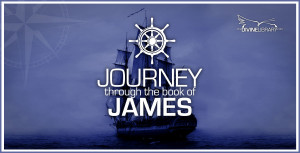 Many have called the Epistle of James the “Proverbs” of the New Testament. One reason is because of the practical teaching found in its chapters. Another reason is because of its frequent use of nature and human interaction as a vehicle for spiritual truth. One such example is the nautical terms found throughout the the epistle.
Many have called the Epistle of James the “Proverbs” of the New Testament. One reason is because of the practical teaching found in its chapters. Another reason is because of its frequent use of nature and human interaction as a vehicle for spiritual truth. One such example is the nautical terms found throughout the the epistle.
One key verse in the first chapter of this epistle reads:
Every good gift and every perfect gift is from above, and cometh down from the Father of lights, with whom is no variableness, neither shadow of turning.
This verse is the keystone verse of the epistle because it holds everything together. And how does James tie it all together? By using nautical references to the ancient art of navigation. The stars, with their fixed points in the sky, provide guidance and consistency by which ancient sea vessels could navigate the waters. Essentially, James was helping his audience navigate successfully through their immediate storms of persecution and suffering. This was his object for writing – the illustration, i.e. the nautical terminology, was the vehicle.
And this was not the only time James uses such terminology in his epistle. He references the waves of the sea being driven and tossed. He commands “Do not err,” a term meaning “to drift away.” He reminds that the untamed tongue is like a ship without a rudder. The language of the epistle is so descriptive that you can almost put yourself on one of the boats on the Sea of Galilee during a storm – maybe that is what James had intended all along for these early Christian disciples.
